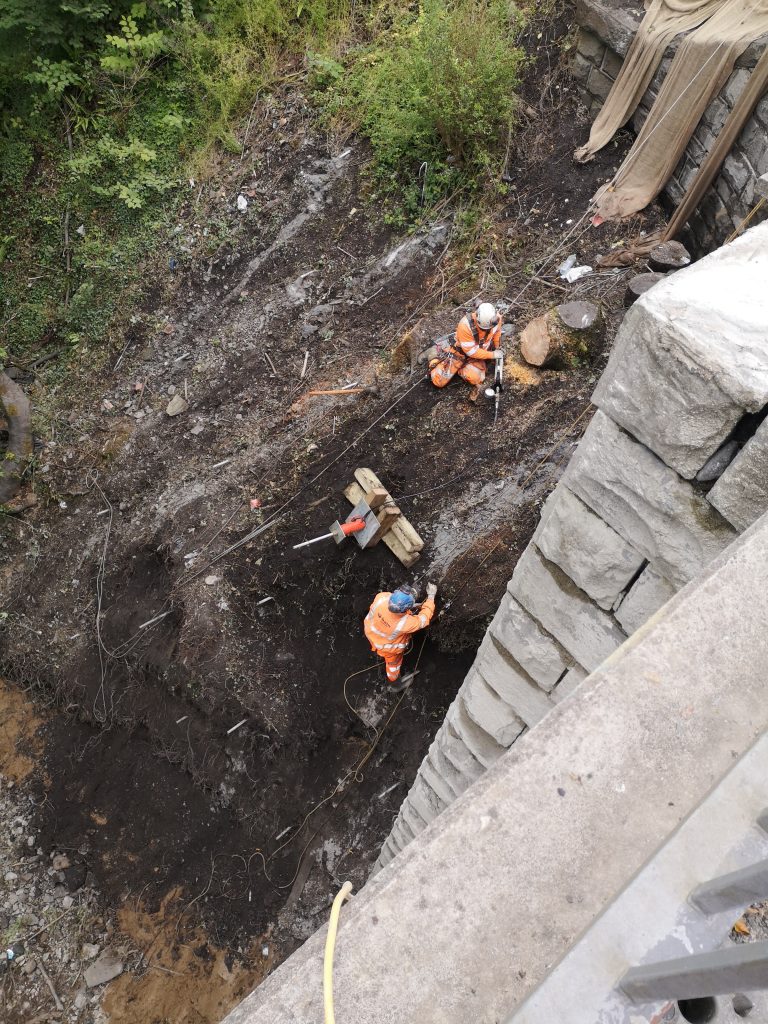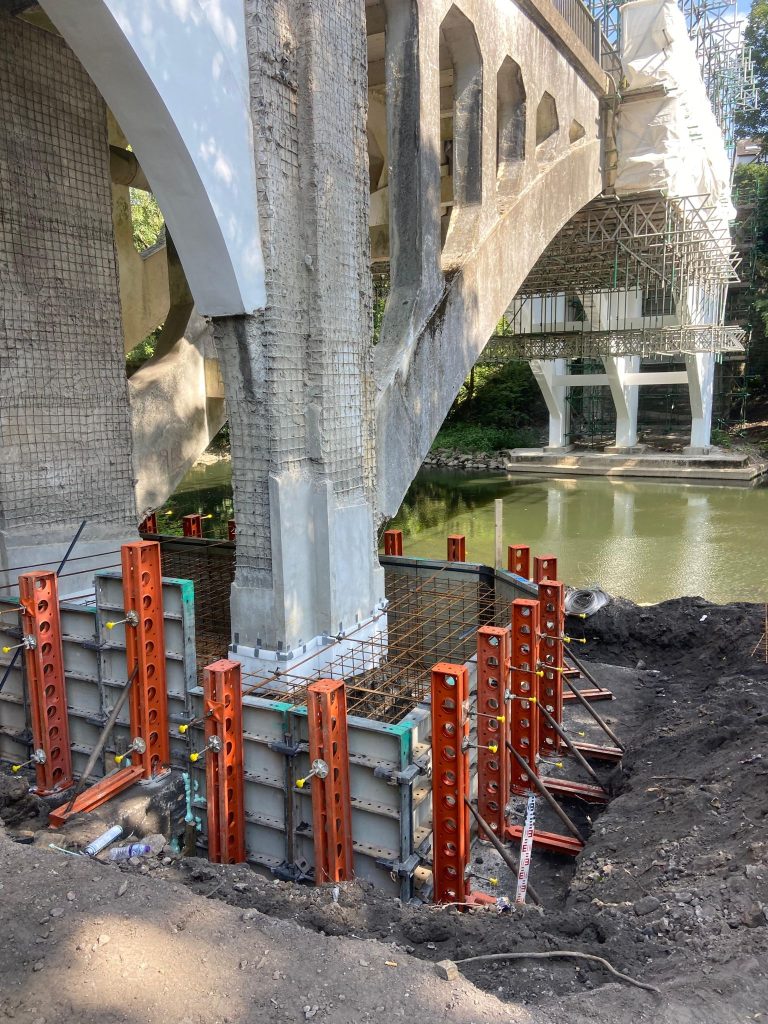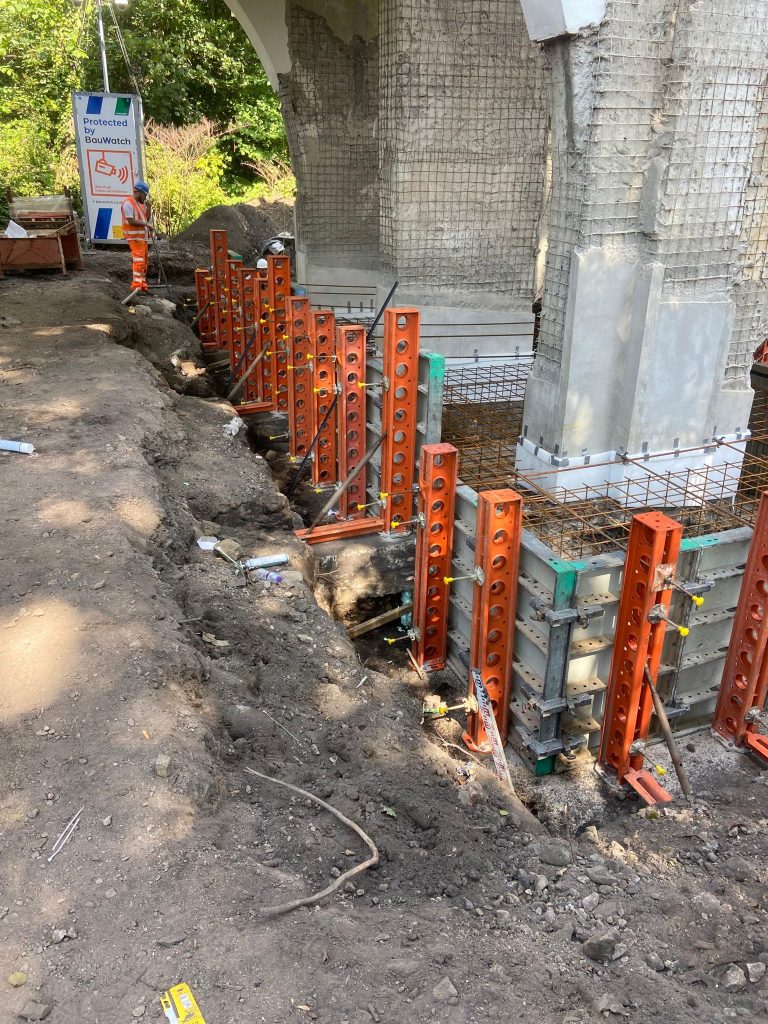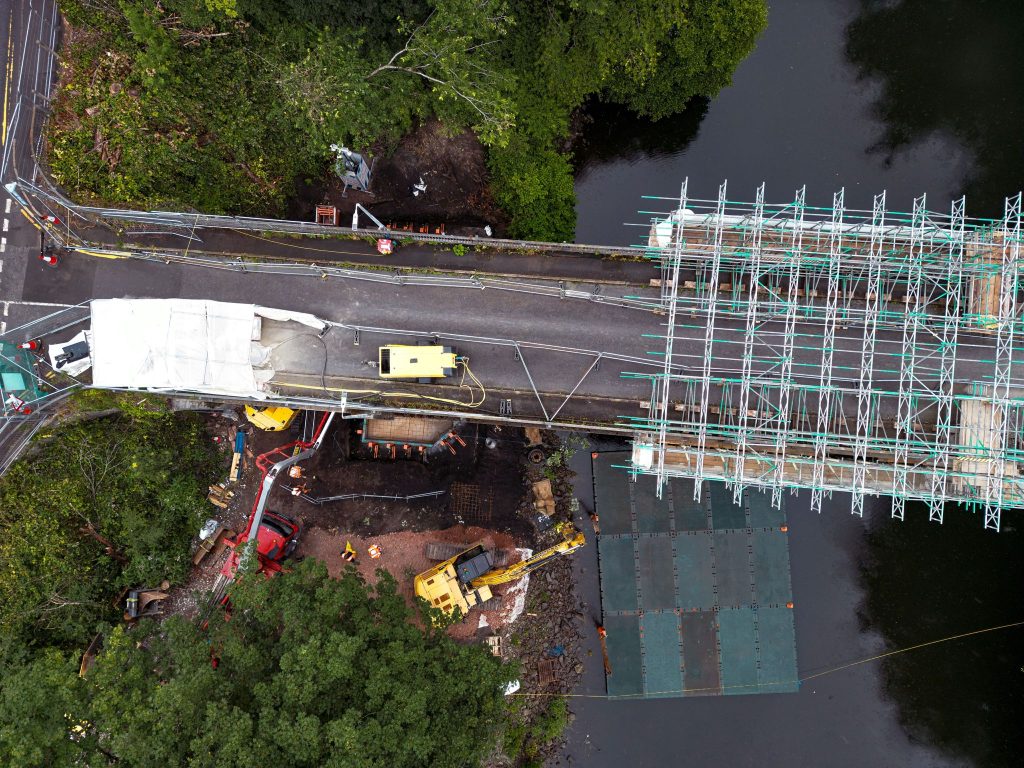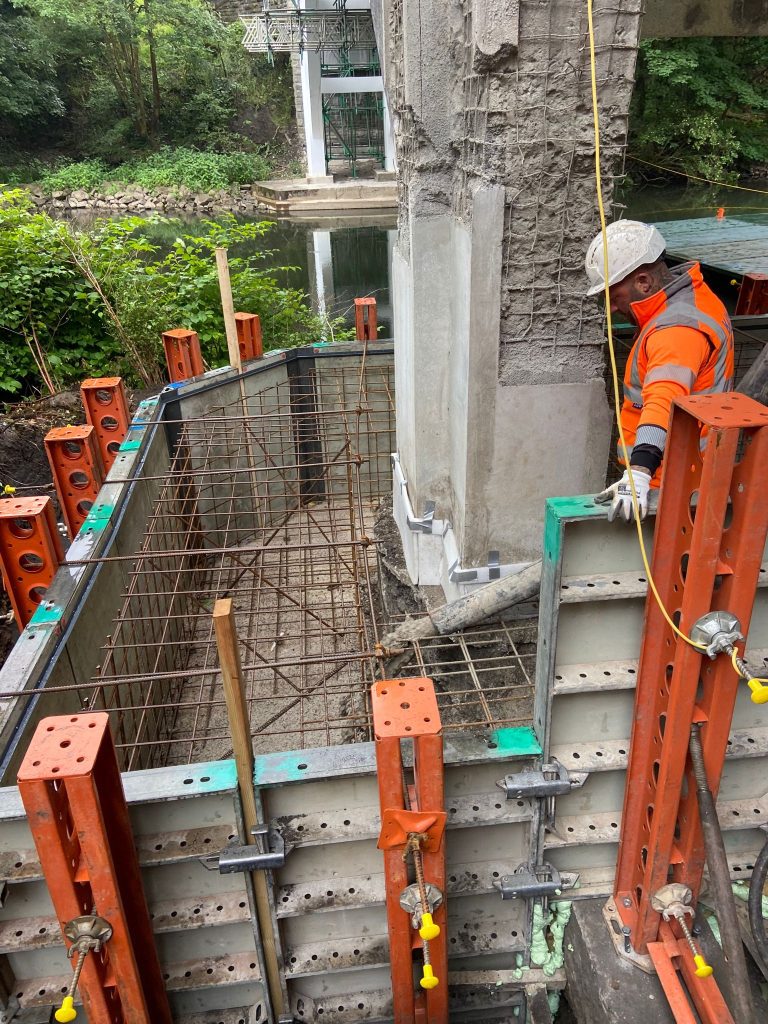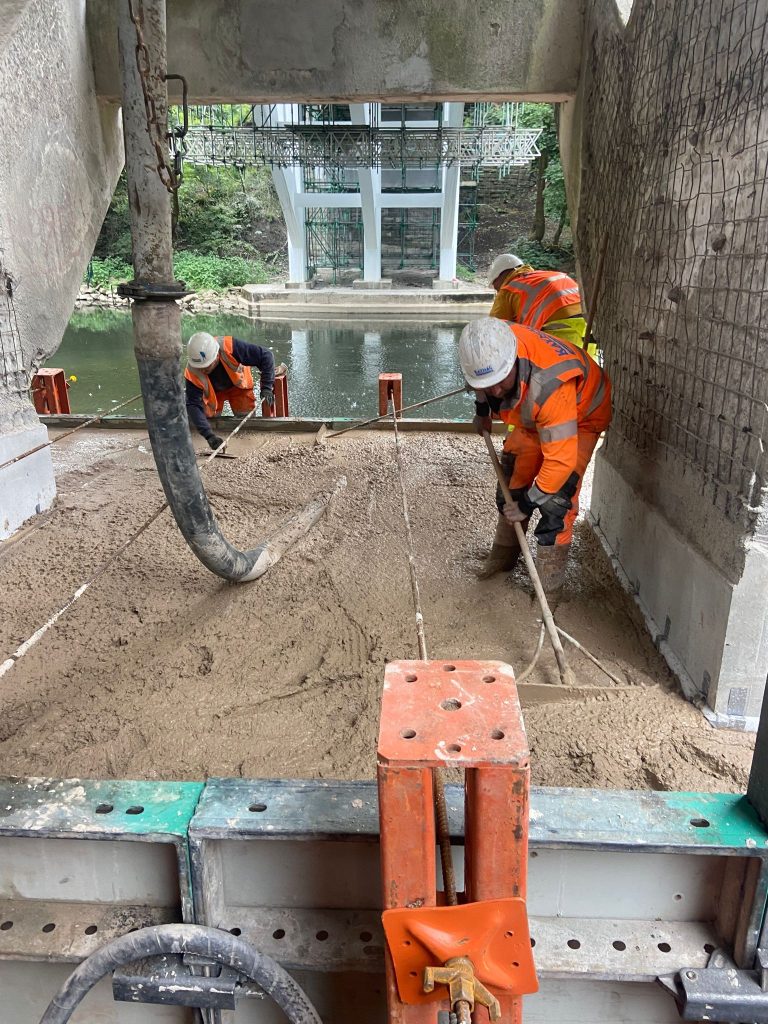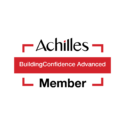White Bridge, Berw Road Bridge Stabilisation
White Bridge, in Pontypridd, South Wales, was damaged by the effects of Storm Dennis in 2020. The vital road bridge links between Berw Road and The Parade, and major refurbishment was needed to secure the listed structure.
Following the flood events, and after a structural inspection, there was safety concerns due to the extent of the damage, the work that was needed was a larger, multi disciplined phase of repairs that included scour protection, embankment stabilisation, waterproofing, concrete repairs, including replacement of old reinforcement and painting to the piers, arches and abutments, requiring White Bridge to close to motorists for a considerable period of time.
Key Challenges
- Environmentally sensitive area;
- Highly restrictive access;
- Close proximity to other contractors;
- Numerous temporary works solutions.
Following consultation with RCTCBC and NRW to determine the most suitable emergency solution to secure the structure while a full scope was being prepared, Kaymac carried out the initial emergency phase of work in 2021, which included permanent scour repairs to the South Abutment and embankment. Works included implementation of our pontoon system for temporary works access, excavation of loose material which had accumulated within void, installation of reinforcement and formwork by divers around the existing pier and placement of underwater concrete to stabilise the structure and rock armour to the South-East embankment to protect the pier and abutment.
In early 2023 as part of the main development of White Bridge, we were commissioned by Concrete Repairs Limited to carry out the South-East Embankment and North Pier Sour Protection Works. This work primarily consisted of:
- Scour Protection Works to the North Pier;
- Erection of Pontoon System to allow for plant access to South-East Embankment;
- Scour Protection Works to the South-East Embankment, including Soil Nailing and Rock Armour installation, which tied into our previously installed rock armour;
- Masonry repointing and vegetation clearance at various locations via roped access.
Access to the works was from the Northern side of the structure, via an access ramp that we built during our initial works in 2021 off Berw Road. The pontoon barge was used to access the Southern side of White Bridge and to undertake the soil nailing works. Temporary S8 Platipus Anchors were installed into the Northern riverbank at the base of the ramp and used to moor up the pontoon overnight or when not in use.
Following mobilisation, environmental protection measures in the form of silt curtains and sedi-mats were placed within the river to encapsulate the North Pier, preventing any contamination of the river. Once in place, the area of excavation was be marked out by the on-site engineer and CAT scanned prior to commencement of excavation works. Once confirmed, excavation works down to formation level commenced and the ground was scanned in 300mm excavation layers to ensure no live assets or services could be struck.
Once the formation level was reached, the excavation was checked by the on-site engineer and all corners of the new concrete were marked out in readiness for the erection of the formwork. An initial high-strength blinding pour was carried out to provide a good working platform and also to allow for a secure fixing for the formwork to be drilled and fixed into. A393 Mesh was erected in accordance with the design and compressible filler board fixed around the piers prior to placement of concrete.
The Altrad Formwork system was then installed in accordance with the approved design and concrete was then placed and compacted within the prepared area until the formation level was reached. Following a sufficient curing period, the formwork was then struck, and the North pier was handed back to CRL as they were going to utilise the newly installed concrete scour protection as a platform to build their scaffold as soon as the concrete had reached strength – this occurred after 7 days.
Our focus could then move to the Southern side of the structure, firstly we installed our pontoon system within the watercourse; as per every scheme with the requirement of our pontoon system, stability calculations had been undertaken to give us the pontoon layout required to carry out the planned tasks with the proposed equipment.
With the pontoon system safely within the watercourse, works to the Southern side of the structure could commence, these comprised of de-vegetation of the embankment and removal of large trees to accommodate the Tecco Green G65 Mesh and soil nails. With the vegetation removed, the mesh was installed by roped access operatives and nailed into place using DYWI Drill Hollow Bars, the bars were installed via the grout flush method, ensuring that the top row was set at a certain level to avoid the DCWW main within the embankment, in accordance with the design. Once all nails were installed, testing was carried out following a sufficient curing period, all successfully passed the criteria, and all were secured in place with plates and lock nuts and the mesh secured with 16mm dia. steel cable. Environmental protection measure in the form of a silt fence was placed at the base of the embankment while works were being carried out to prevent any potential contamination of the watercourse.
Following completion of the soil nailing works, large rock armour was placed at the base of the embankment and additional rock armour was placed on top of our previously installed to tie into the new profile of the embankment.
Whilst all the operations above were being carried out, we had a team of roped access operatives carrying out de-vegetation works, vegetation treatment, masonry repointing, rebuilding and re-setting works on all 4 corners of the structure.
All elements of the work were carried out on budget and programme.
